
Antarctica doesn’t have much in the way of life, other than microbes.
Away from the coast, “there are no animals and no trees and vegetation,” says Allie Balter ’14, one of several alumni who conduct research on the southernmost continent. “It feels like you are on Mars.”
That wasn’t always the case.
The Bates Club of Antarctica
This is Part 3 of a series about Bates alumni who spent this winter in Antarctica.
Part 1: If glaciers could talk, what would they say?
Part 2: If you give a seal a camera
Part 4: The secrets of the lakes
Hank Woolley ’13, a graduate student in paleontology, spent parts of November, December, and January on a glacier near the South Pole. There, he looked for the fossil remnants of the vast forests and large animals that lived and hunted among the trees.
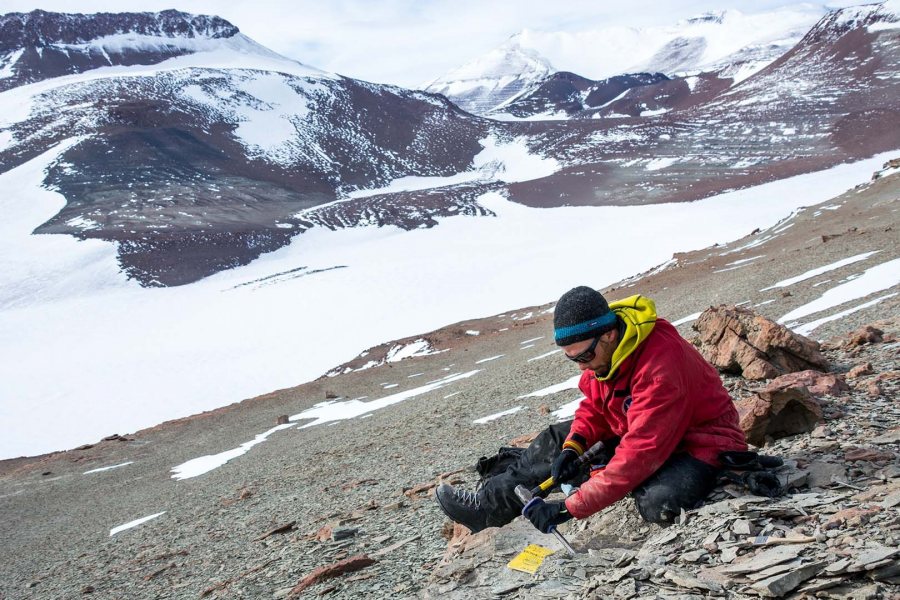
Hank Woolley ’13 excavates a partial skeleton of a Procolophon, a burrowing reptile relative, on an unnamed ridge above the Gillespie Glacier. (Mike Lucibella/USAP, NSF)
His work adds to what’s known about animals who lived hundreds of millions of years ago — even before the dinosaurs — and how they survived one of Earth’s largest extinction events.
Learn more about Woolley’s research, and what you do with your free time on a glacier:
The mission
Find the “refugees” of the Great Permian Extinction.
The people
Woolley is a doctoral student in paleontology at the University of Southern California and a graduate student-in-residence at the Natural History Museum of Los Angeles County. For his first trip to Antarctica, he joined a team of paleontologists, geochemists, and a mountaineer.
Different types of history
“I graduated from Bates with BAs in history and French,” Woolley says. “After volunteering on a dinosaur dig in southern Utah with the Denver Museum of Nature & Science, I decided to pursue my childhood passion for fossils and paleontology and enrolled at the University of Colorado Boulder to obtain another undergraduate degree, this time in geology.”
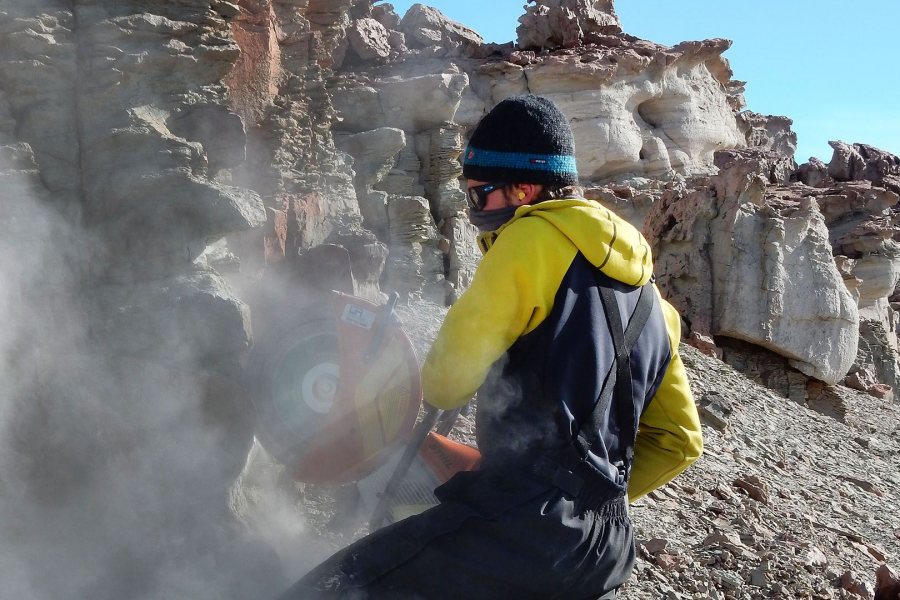
Hank Woolley ’13 uses a diamond-bladed rock saw to excavate the pig-sized, mammal-like reptile Lystrosaurus, fossilized in a vertical rock face 1,500 feet above the Shackleton Glacier. (Courtesy of Hank Woolley)
The place
Woolley and his team camped on Shackleton Glacier, about 340 miles from the South Pole.
Antarctic living
“We had running water for handwashing and washing dishes. We had a full kitchen, a cook and a head chef, beautiful meals. We had lobster tail for New Year’s Eve. We had electrical outlets and generators.
“We had a lot of amenities that made being out on a glacier in the middle of nowhere quite easy.”
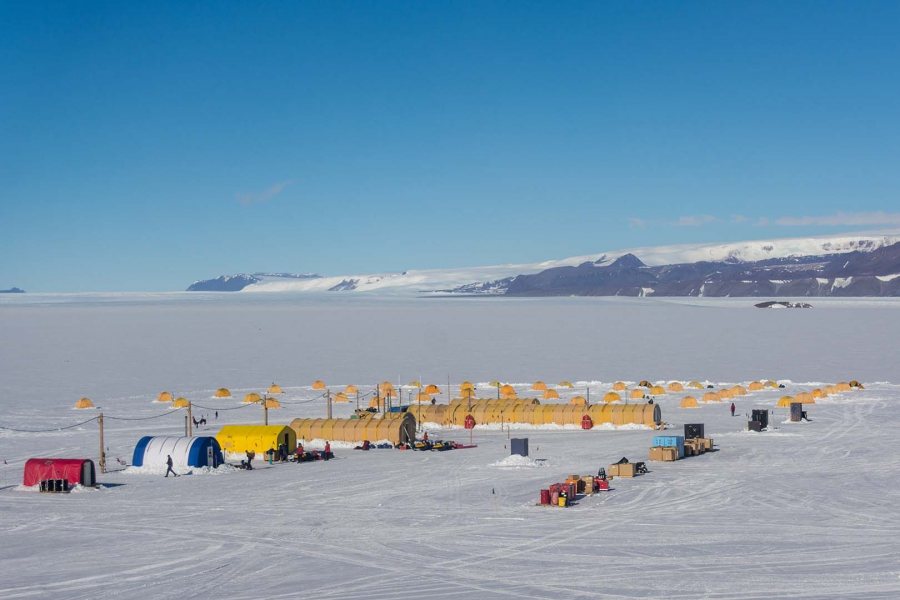
At the Shackleton Glacier camp, leisure activities might include softball, jogging, or beach volleyball. (Mike Lucibella/USAP, NSF)
The work
Each morning, a helicopter known as the “Shackleton Uber” flew the team to a new site, where they would prospect for fossils.
“We collected over 200 different fossil skeletons and bones and about 4,500 pounds of rocks,” Woolley says.
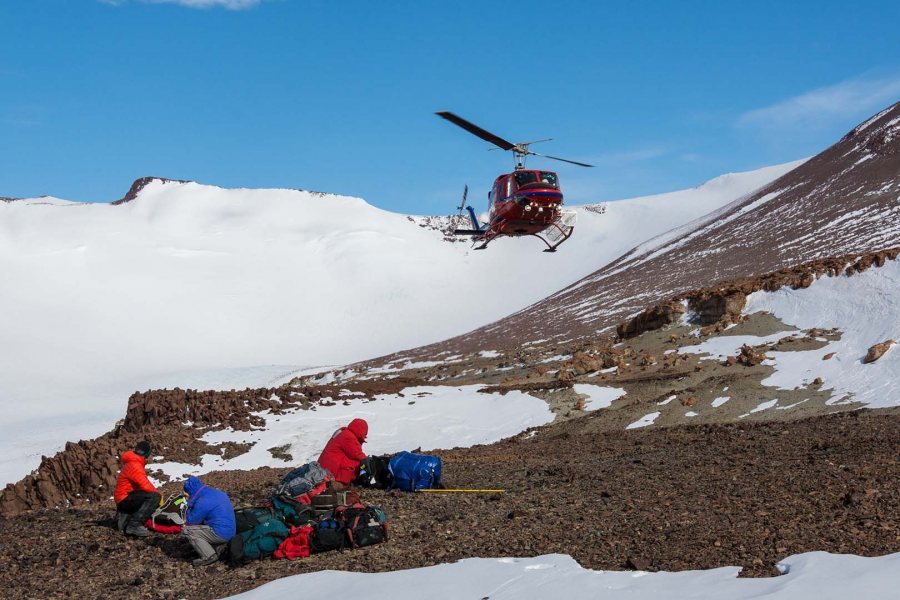
Hank Woolley ’13, mountaineer Peter Braddock, and paleontologist Akiko Shinya prepare to catch a helicopter ride back to camp after prospecting for fossils in the Cumulus Hills. (Mike Lucibella, USAP/NSF)
Our ancestors’ ancestors
Two hundred fifty-two million years ago, a conifer-like forest covered the continent. Ferns blanketed the forest floor and large animals, precursors to modern-day mammals and reptiles, made the continent their home.
“You have these animals walking around and burrowing,” Woolley says. “Maybe some of them are climbing big trees. At the same time, you have summers where it’s light 24 hours a day and winters where the sun never rises. It’s a completely unique ecosystem that we don’t really have today.”
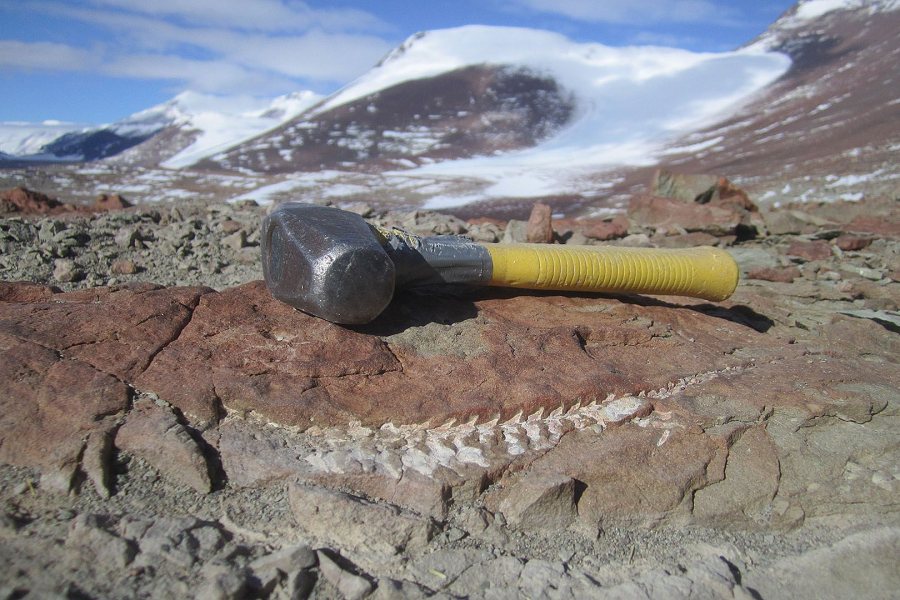
With a hammer shown for scale, the skeleton of a badger-sized, burrowing early mammal relative called a Thrinaxodon is embedded in a 250 million-year-old red sandstone formation. (Courtesy of Hank Woolley)
Global warming, ancient and current
The end of the Permian geologic period was marked by a huge extinction event that wiped out about 80 percent of all life on Earth. (The dinosaurs emerged during the following Triassic period).
Woolley and his team hypothesize that some species survived the extinction by migrating close to the South Pole.
“They were fleeing from lower latitudes and hotter temperatures,” he says. “It was an extreme global warming event. It’s what we’re scared might happen to our planet today. That’s what’s so great about studying these mass extinctions — we can predict what will happen from past events.”
Read more about Bates alumni in Antarctica:
Bates Club of Antarctica: If glaciers could talk, what would they say?

